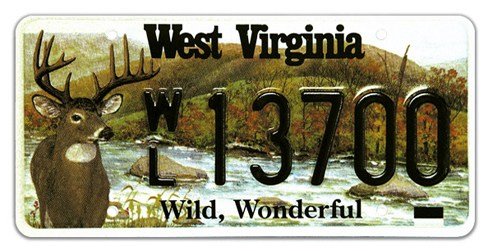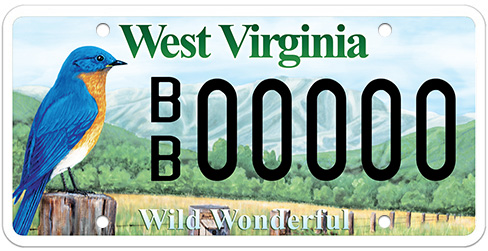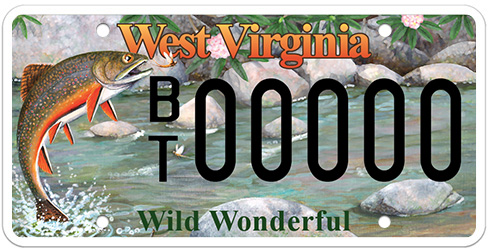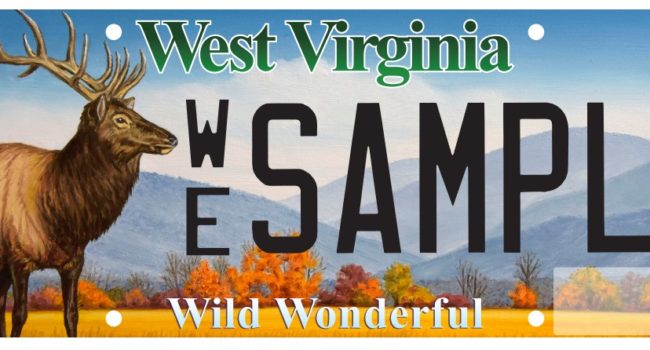When you love something or support a cause, you can’t help but tell the world about it. So, if you love hunting, fishing or our state’s wildlife in general and want to support the West Virginia Division of Natural Resources’ education and research programs, you need to get one of West Virginia’s special wildlife-themed license plates for your car. Here’s everything you need to know about them.

A way to showcase West Virginia wildlife
West Virginia’s wildlife plates have been around since 1996, when voters approved a constitutional amendment to set aside a portion of wildlife license plate sales to for West Virginia’s Wildlife Diversity Program. The first plate, a rose-breasted grosbeak, came out in 1998 and was designed by the late Tom Allen, who was a DNR wildlife biologist for 33 years. Allen designed four more plates for a black bear, white-tailed deer, brook trout and bluebird. The most recent plate, which features an elk, was designed by Rhea Knight, whose work has been on the cover of the DNR wildlife calendar.
What makes these license plates truly special is that they feature life-like paintings that cover the entire plate. For example, the eastern bluebird plate features a painting of the bird sitting on a fencepost looking out over thickly forested mountains and blue sky.

Benefits a good cause
West Virginia’s wildlife license plates are some of the most popular specialty plates in the state. The white-tailed deer buck plate has been the best selling and most renewed plate since 2001. The bluebird plate has been the second-most popular plate in the wildlife series.
From every wildlife license plate that’s sold, $15 is earmarked for DNR wildlife diversity programs. This funding is used to conserve non-game animal species and rare plants, provide educational materials to schools and libraries, develop wildlife viewing areas and support volunteer work, such as the Master Naturalist program.
“We send out educational boxes to science teachers with the curriculum already developed and many of our wildlife presentations at state parks are provided free-of-charge thanks to the funding we get from these license plates,” said Scott Warner, DNR Assistant Chief for Wildlife Diversity.
Warner said West Virginians are proud of the state’s wildlife heritage and that purchasing a wildlife license plate is a great way to fund the research and education that will help preserve it for future generations.

Order your wildlife plate
Purchasing a wildlife license plate is easy. Just pick which animal you want on your plate and visit your local DMV office when it’s time to renew your plate. You can also renew by mail and specify which plate you want. If you aren’t up for renewal, you can exchange your current plate by paying a pro-rated registration fee.
Current options available are the whitetail deer, brook trout, eastern bluebird and elk plates. The grosbeak and black bear plates have been retired, but can be renewed if you already have one on your vehicle.
For more information about wildlife license plates, call 1-800-642-9066 or click here.




